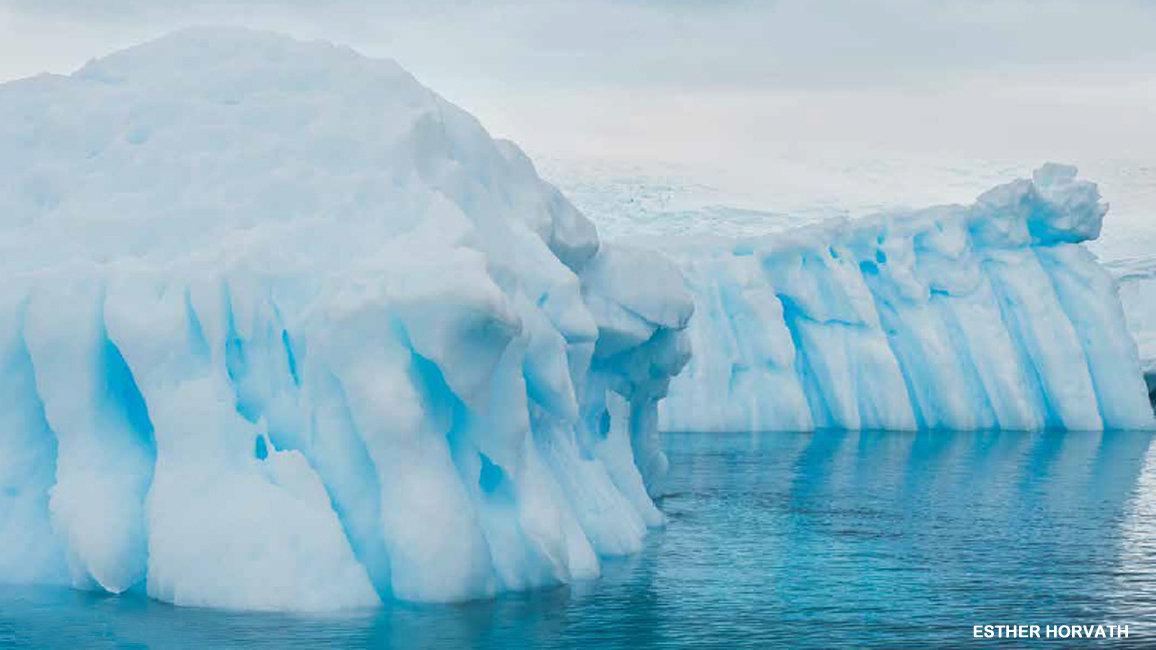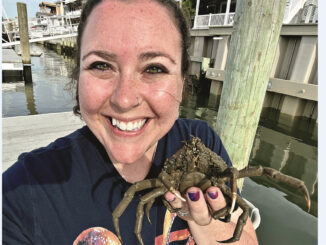
Antarctic Adventure
By Kathy Kranking; Photos by Esther HorvathCome along on a journey to the bottom of the Earth!

Welcome to the beautiful Weddell (WED-ul) Sea! (See map below.) This sea in Antarctica is home to thousands of animal species. It’s an area of very harsh weather and lots of ice, making it really hard for people to get there. So the Weddell Sea is one of the few places on Earth that has remained mostly unaffected by humans.
The United States and many other countries want it to stay that way. They’re working to make the Weddell Sea a sanctuary (SANK-choo-air-ee), or protected area. It would be the largest sanctuary on Earth—about 200 times the size of Yellowstone National Park. Everything is special in this place, from the animals that live here to the ice itself. In this story, you can join a group of scientists who have come to study the Weddell Sea from their research ship. Bundle up and read on to learn more!
ALL ABOARD!
Aboard an icebreaker, a special kind of ship that can break through ice, the scientists head off into the Weddell Sea. They’ll be studying the ice and the animals that depend on it. The more they learn, the more they can show the world how special the Weddell Sea is and why it needs to be protected.
FROZEN SEA
Even though it’s a sea, the Weddell Sea is not all water. Large parts of it are covered by ice, such as the spot where this Weddell seal pup is lying. To the six species of seals living here, ice is important as a place to have their young or just rest.
The parts of the sea that aren’t frozen have many floating chunks of ice called icebergs, such as the one above. Icebergs often look blue because of the way they reflect light.

PENGUIN ISLAND
The scientists leave their ship and use a smaller, inflatable boat to explore an island. Here, more than 4,000 gentoo (JEN-too) penguins live. The birds have no fear of people because they don’t see them very often, so they let the scientists get pretty close.
BEATEN PATHS
It’s nesting time for the gentoo penguins. They make their nests at the top of the island’s mountains. But to get food, they need to go back down to the sea. As they travel, the snow gets packed down along their paths. This forms penguin “highways.” Brown penguin poop makes the highways easy for the scientists to see.
MOM AND ME
At the top of a mountain, the scientists see this mother gentoo penguin and her chick. The mom is staying with the baby while the dad penguin is off hunting for food. Chicks are covered with fuzzy feathers when they hatch. As they get older, they grow waterproof feathers that they’ll need for swimming.
VIDEO: WATCH PENGUINS IN ACTION!

BIG NEWS
Back down on the frozen sea, the arrival of the scientists causes great interest within a colony of emperor penguins. The emperor above left is calling as if to alert the others that visitors are approaching. And soon all the other emperors waddle up to see what’s going on (top right).
SNOWY SCIENCE
And here’s what is going on: The scientists are setting up special equipment. The equipment will measure how much snow falls on the ice. One of the things the scientists hope to learn on their trip is how the Weddell Sea climate is changing over time.
NOSY NEIGHBORS
After the scientists leave, the emperors come up to check things out. Penguins are very curious. To them, maybe the equipment looks like a really strange penguin!

BACK ON BOARD
The scientists watch for whales as the sun rises over the Weddell Sea. Beneath the waves, far from sight, live many important species of fishes and invertebrates (in-VUR-tuh-bruts), or animals without backbones. Whales and many other species depend on these animals for food.
WHALES AHOY!
In the icy water, a minke (MING-kee) whale comes up for a breath of air. Scientists have found 12 species of whales here. The two most common are minkes and humpbacks.
MEGA MOUTHFULS
Check out this blue whale chowing down on a cloud of tiny, shrimp-like krill. Krill feed on plant-like algae (AL-jee), which grow on the bottom of the ice (small photo). Many, many animals in the Weddell Sea depend on krill to survive, either because they eat krill or because they eat other animals that do.
As the climate warms, there will be less ice in the Weddell Sea, making it easier for fishing boats to get in and catch krill and fish that so many animals depend on. That’s just one more reason to protect the Weddell Sea and all its many treasures.
















